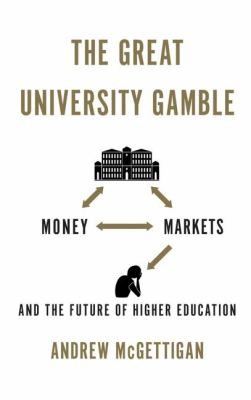Navigating the Modern University Landscape
“The Great University Gamble” by Andrew McGettigan presents a critical examination of the evolving landscape of higher education, focusing on the intersection of market forces and academic institutions. In an era where digital transformation and economic pressures reshape industries, universities are not immune. This book offers a strategic lens through which professionals can understand and adapt to these changes, providing actionable insights for navigating the modern educational environment.
The Commodification of Education
McGettigan begins by exploring the commodification of higher education, a trend that parallels shifts in other sectors towards market-driven models. This section delves into how universities increasingly operate like businesses, prioritizing financial metrics and consumer satisfaction. This shift raises questions about the core mission of educational institutions and their role in society.
The book draws parallels with the digital transformation seen in the corporate world, where agility and customer-centric approaches redefine success. For professionals, understanding this commodification is crucial for developing strategies that balance financial sustainability with educational integrity. This theme is reminiscent of Clayton Christensen’s “The Innovator’s Dilemma,” where the focus on innovation and market forces can disrupt traditional business models. Similarly, in “Academically Adrift,” Richard Arum and Josipa Roksa discuss the implications of commodification on educational quality and student outcomes.
Strategic Frameworks for Institutional Growth
In response to these market pressures, McGettigan introduces frameworks for institutional growth that emphasize strategic planning and innovation. He discusses the importance of aligning university goals with broader societal needs, ensuring that academic programs remain relevant and impactful.
This section provides professionals with tools to assess and implement strategic initiatives, drawing on concepts from business strategy and leadership. By integrating these frameworks, universities can navigate the challenges of the modern landscape while maintaining their educational mission. A parallel can be drawn with Jim Collins’ “Good to Great,” which highlights the importance of strategic alignment and disciplined innovation in achieving sustained success.
Leadership and Governance in Higher Education
Leadership plays a pivotal role in steering universities through uncertain times. McGettigan highlights the need for adaptive leadership styles that embrace change and foster a culture of innovation. He compares traditional hierarchical models with more agile, decentralized approaches that empower faculty and staff.
Professionals can apply these insights by adopting leadership practices that promote collaboration and responsiveness. This shift mirrors trends in the digital workplace, where flexibility and empowerment drive organizational success. In “The Fifth Discipline” by Peter Senge, the importance of fostering a learning organization through innovative leadership is a key theme, echoing McGettigan’s insights.
The Role of Technology and Digital Transformation
Technology is a driving force behind many of the changes in higher education. McGettigan examines how digital tools and platforms reshape teaching, learning, and administration. He emphasizes the potential for technology to enhance educational outcomes but cautions against its unchecked adoption without strategic alignment.
For professionals, this section offers guidance on leveraging technology to create value and improve efficiency. By understanding the opportunities and challenges of digital transformation, universities can position themselves as leaders in the educational sector. This aligns with Kevin Kelly’s “The Inevitable,” which explores how technological trends shape the future and the strategic foresight needed to harness them effectively.
Financial Sustainability and Funding Models
A critical aspect of the modern university gamble is financial sustainability. McGettigan analyzes various funding models, highlighting the shift from public funding to tuition-based revenue streams. He discusses the implications of this shift for access, equity, and institutional stability.
Professionals can draw on these insights to develop financial strategies that ensure long-term viability. By exploring alternative funding sources and innovative financial models, universities can mitigate risks and enhance their resilience. This financial analysis resonates with the themes explored in “The Business of Higher Education” by John C. Knapp and David J. Siegel, which delves into the economic challenges and opportunities faced by educational institutions.
Ensuring Equity and Access
Equity and access remain central concerns in the discourse on higher education. McGettigan addresses the challenges of maintaining inclusivity in a market-driven environment, emphasizing the need for policies that support diverse student populations.
This section provides professionals with strategies to promote equity and access, drawing on examples from other sectors where diversity and inclusion drive innovation. By prioritizing these values, universities can fulfill their social responsibilities and enhance their impact. “Whistling Vivaldi” by Claude Steele provides further context on how understanding stereotype threat and promoting inclusion can transform educational outcomes.
Final Reflection: The Future of Higher Education
In conclusion, “The Great University Gamble” offers a comprehensive analysis of the forces shaping higher education today. McGettigan’s insights provide a roadmap for professionals seeking to navigate this complex landscape, emphasizing the importance of strategic thinking, adaptive leadership, and a commitment to educational integrity.
As universities continue to evolve, the lessons from this book will remain relevant, guiding institutions towards a future where they can thrive amidst change. By applying these principles, professionals can contribute to the development of a more resilient and impactful higher education system. This synthesis can be applied across domains such as leadership, where adaptive strategies are crucial, and change management, where understanding market dynamics is essential for driving innovation.

